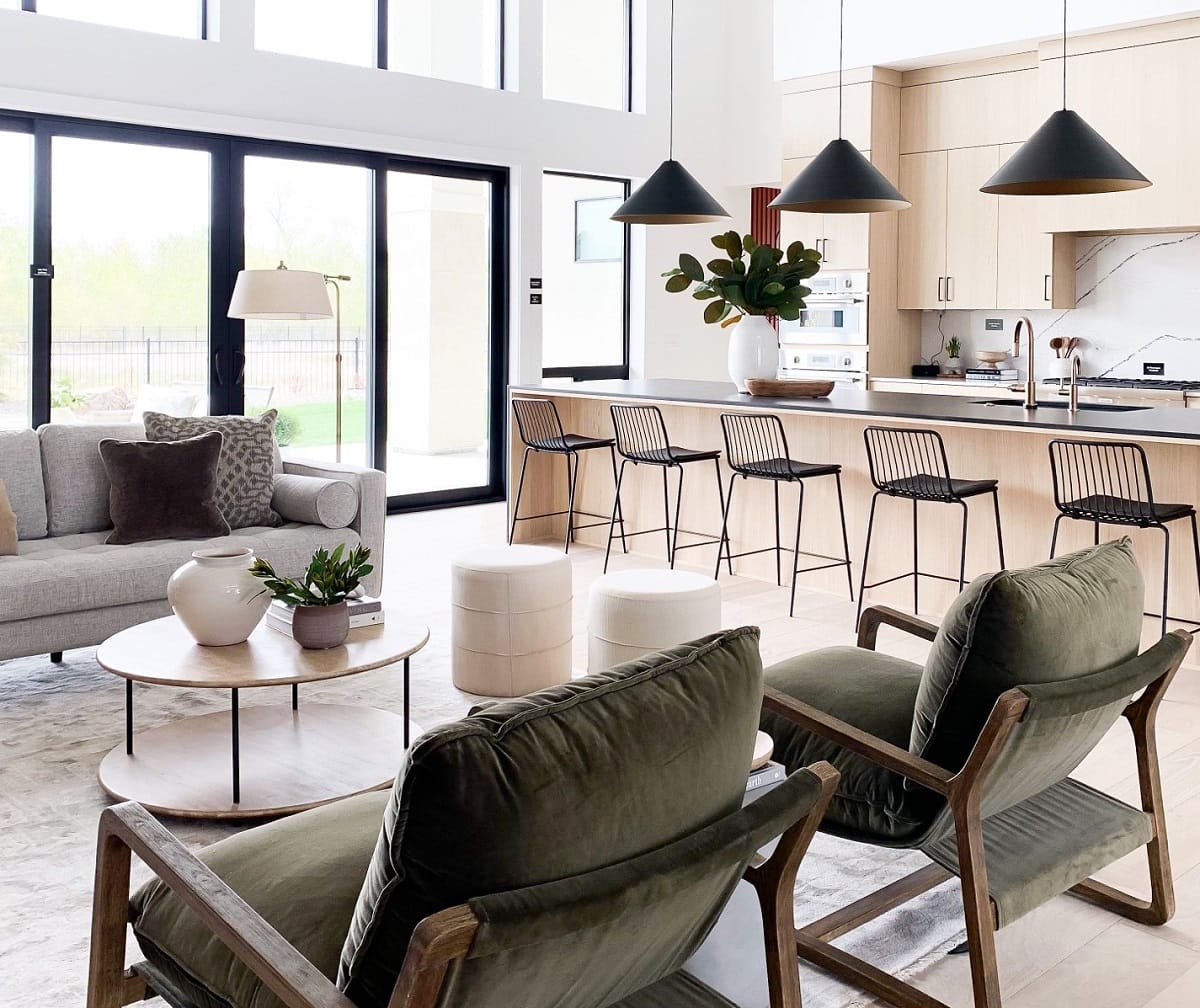
Open Concept Living: Designing a Seamless Flow Between the Living Room and Kitchen
Open concept living spaces have gained popularity in recent years for their ability to create a sense of spaciousness and connectivity in the home. These designs, often characterised by the absence of walls separating the living room and kitchen, can be both functional and aesthetically pleasing when executed thoughtfully. Living room interior design should reflect your personal style while creating a comfortable and inviting atmosphere for both relaxation and social gatherings. In this article, we’ll explore how to design an open concept living area that fosters a seamless flow between the living room and kitchen, creating a harmonious and inviting space.
Define Zones with Furniture Placement
In open concept living, it’s crucial to create distinct zones for different functions while maintaining an open feel. Use furniture placement to define areas. For example, position a sofa to face the living room area and a dining table to delineate the kitchen space. This subtle arrangement helps maintain a sense of separation.
Consistent Colour Palette
Harmonise the living room and kitchen by selecting a consistent colour palette. This doesn’t mean everything must be the same colour, but choosing complementary shades can tie the two spaces together. Consider using a dominant colour for walls and accents that appear in both areas.
Flooring Transition
Choose a flooring option that transitions smoothly between the living room and kitchen. Hardwood, tile, or laminate floors can work well for both areas. The key is to ensure that the transition is visually seamless and safe.
Cohesive Design Elements
Select design elements that can be carried across both spaces. This could include similar cabinet hardware, lighting fixtures, or even coordinating decor items like cushions or artwork. These elements create a visual link between the two areas.

Multi-Functional Furniture
In open concept living, space can be at a premium. Invest in multi-functional furniture pieces that serve dual purposes, such as a dining table with storage or a sofa that converts into a guest bed. These items not only save space but also enhance functionality.
Create a Focal Point
Establish a focal point in each area to draw the eye and create visual interest. In the living room, it might be a statement fireplace or a feature wall with artwork. In the kitchen, a striking backsplash or an island with pendant lighting can serve as a focal point.
Use Area Rugs
Area rugs can help define spaces within an open concept layout. Place an area rug under the living room furniture arrangement and another under the dining table or kitchen island. The rugs not only delineate zones but also add texture and warmth.
Maintain Clear Sightlines
Keep the space visually open by using low-profile furniture and avoiding clutter. Ensure that sightlines from one area to another remain unobstructed, allowing you to appreciate the entire space at a glance.

Balance Acoustics
Open concept spaces can sometimes suffer from poor acoustics due to the lack of walls to absorb sound. Use rugs, curtains, and strategically placed soft furnishings to help dampen noise and create a comfortable acoustic environment.With these design strategies, you can create an open concept living space that seamlessly integrates your living room and kitchen while maintaining functionality, style, and a sense of unity. Open concept living is all about embracing the spaciousness and connectivity of your home, and with the right design approach, you can achieve a balanced and inviting environment for your family and guests to enjoy. If this seems complicated to you, rely on professionals in interior design field and look for help here: https://www.cledemaison.co.uk/en.




